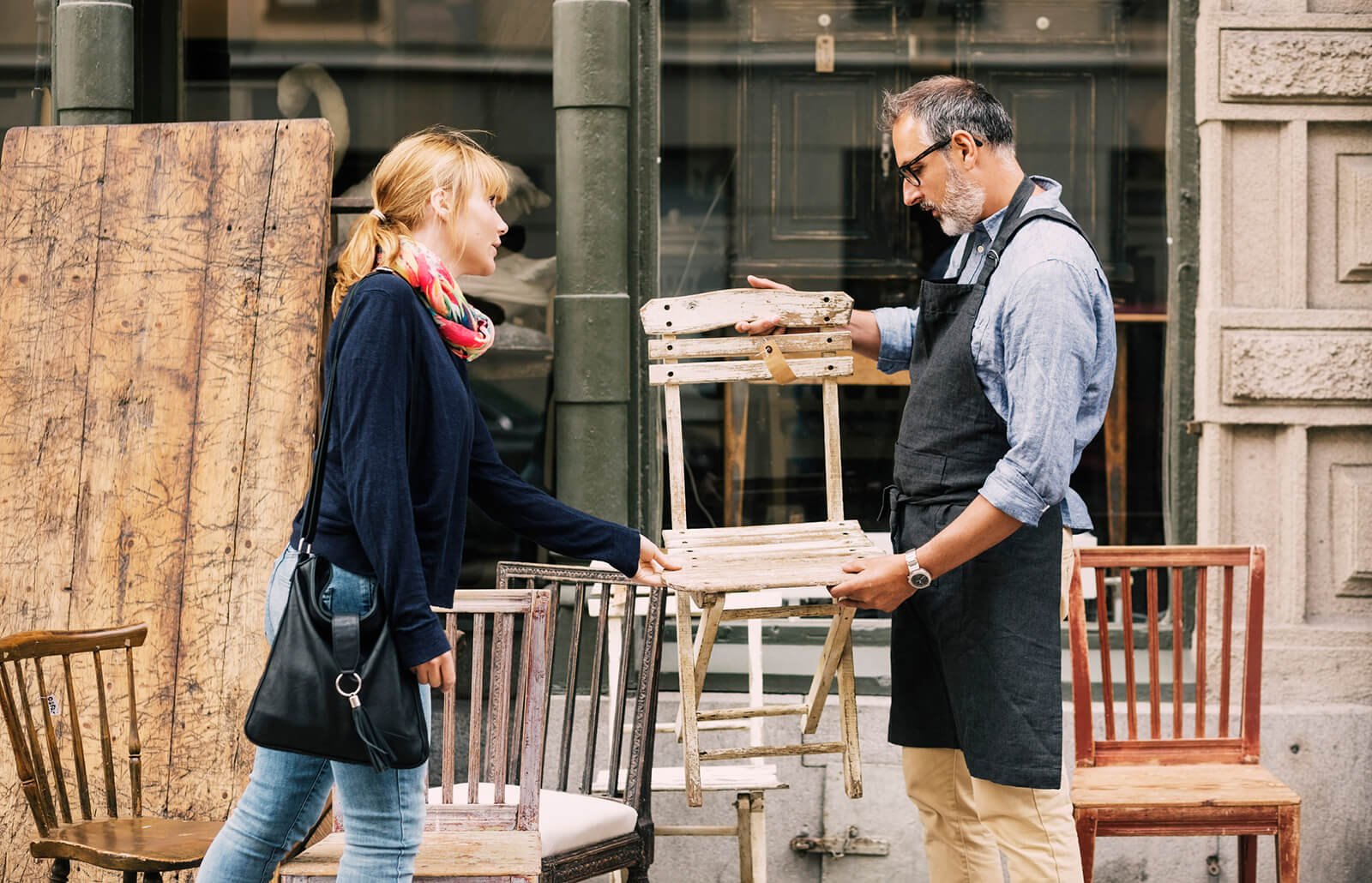

Articles
Who Buys Antique Furniture
Modified: January 19, 2024
Looking to sell your antique furniture? Discover who buys furniture and get top dollar for your treasures. Contact us today!
(Many of the links in this article redirect to a specific reviewed product. Your purchase of these products through affiliate links helps to generate commission for Storables.com, at no extra cost. Learn more)
Introduction
Welcome to the fascinating world of antique furniture! Furniture plays a crucial role in our lives, providing comfort, functionality, and aesthetic appeal to our homes and spaces. When it comes to furnishing our living spaces, it’s always a delightful experience to explore the world of antique furniture.
Antique furniture carries a unique charm and brings a sense of history and character to any setting. It reflects the craftsmanship and design aesthetic of the past, offering a glimpse into different eras and styles. From intricate carvings to exquisite finishes, antique furniture tells a tale of artistry and heritage.
Whether you’re an enthusiast, collector, interior designer, or someone simply looking to add a touch of vintage allure to your home, buying antique furniture can be an exciting endeavor. However, it’s essential to consider several factors to ensure a successful purchase.
In this article, we will explore the various types of buyers in the antique furniture market, as well as the crucial factors to consider when making a purchase. Whether you’re interested in rare pieces, restoring damaged furniture, or looking for specific styles, understanding these factors will guide you towards making informed decisions.
So, let’s dive into the fascinating world of antique furniture and discover the keys to an exceptional buying experience!
Key Takeaways:
- Antique furniture buyers, including collectors, interior designers, and dealers, should consider authenticity, condition, provenance, and style when making purchases to ensure value and investment potential.
- The allure of antique furniture lies in its rarity, authenticity, and historical significance, offering a tangible connection to the past and adding beauty, character, and timeless appeal to living spaces.
Read more: Companies Who Buy Used Furniture
Factors to Consider When Buying Antique Furniture
Buying antique furniture is not just about selecting a beautiful piece that catches your eye. It requires careful consideration of several factors to ensure that you’re making a wise investment. Here are some essential factors to keep in mind:
- Authenticity: Authenticity is of utmost importance when buying antique furniture. Look for genuine pieces that are from the era they claim to be. Research and familiarize yourself with the characteristics and design elements of the specific era you’re interested in, such as Victorian, Art Deco, or Mid-Century Modern. Examine the construction techniques, materials used, and any signatures or marks that indicate the piece’s authenticity.
- Condition: Consider the condition of the furniture before making a purchase. While some wear and tear are expected with age, evaluate if the damage is reparable or if it significantly affects the value and functionality of the piece. Factors like woodworm, structural issues, missing parts, or excessive restoration should be carefully assessed.
- Provenance: Provenance refers to the history and origin of the furniture. Knowing the provenance adds value to the piece and assures you of its authenticity. Look for any documentation, certificates, or records that provide information about previous owners, historical significance, or notable events associated with the furniture.
- Style and Aesthetics: Antique furniture offers a wide range of styles, each with its distinctive characteristics. Consider your personal taste and the style that complements your existing decor. Whether you prefer ornate Victorian designs, sleek Art Deco lines, or rustic farmhouse charm, choose furniture that resonates with your style sensibilities.
- Restoration: Antique furniture often requires some degree of restoration. Determine if the piece has been restored, and if so, assess the quality of the restoration work. Look for authentic restoration practices that preserve the integrity of the original piece rather than overly harsh or modern alterations. Additionally, consider if you have the resources and expertise to further restore or maintain the piece in the future.
- Price and Value: Research the market value of similar antique furniture pieces to gauge if the price is reasonable. Factors that influence the value include rarity, condition, quality of craftsmanship, and historical significance. However, keep in mind that the value of antique furniture can fluctuate over time, so it’s essential to make a purchase based on thorough research and assessment of all other factors.
By carefully considering these factors, you can ensure that your investment in antique furniture is not only visually pleasing but also worthwhile in terms of quality and long-term value. Next, let’s explore the different types of buyers in the world of antique furniture.
Types of Antique Furniture Buyers
Antique furniture attracts a diverse range of buyers, each with their own motivations and preferences. Understanding the different types of buyers in the antique furniture market can provide valuable insights into the demand and trends. Here are some common types of antique furniture buyers:
- Collectors: Collectors are passionate individuals who actively seek out antique furniture pieces to add to their curated collections. They have a deep appreciation for the craftsmanship, historical value, and unique features of each piece. Collectors often specialize in specific eras, styles, or types of furniture, allowing them to become experts in their chosen niche.
- Interior Designers: Interior designers often turn to antique furniture to create distinctive and timeless spaces for their clients. They understand the value of incorporating antique pieces to add character, depth, and a sense of history to a room. Interior designers carefully select antique furniture that complements the overall design concept and seamlessly integrates with modern elements.
- Antique Dealers: Antique dealers are professionals who specialize in buying and selling antique furniture. They possess in-depth knowledge of various styles and eras, enabling them to identify valuable pieces and negotiate prices. Antique dealers often have extensive networks and resources to source rare and unique furniture, making them a valuable resource for collectors, interior designers, and individuals looking to buy antique furniture.
- Auction Houses: Auction houses provide a platform for buyers and sellers to trade antique furniture through competitive bidding. Buyers can find a wide variety of pieces, ranging from rare and highly valuable items to more accessible and affordable options. Auction houses often attract collectors, interior designers, and antique enthusiasts looking for unique and exceptional pieces.
- Online Sellers: The internet has revolutionized the way people buy and sell antique furniture. Online platforms and marketplaces connect buyers and sellers from around the world, offering a vast selection of antique furniture. Online sellers range from individual collectors selling their personal pieces to established antique dealers with a virtual presence.
- Estate Liquidators: Estate liquidators are professionals who handle the sale and disposal of furniture and other possessions from an estate. They often oversee the process of selling antique furniture, either through auctions, estate sales, or private sales. Estate liquidators cater to buyers who are interested in acquiring antique furniture from estate sales or liquidation events.
Each type of buyer brings their own perspective and expertise to the world of antique furniture. Whether you’re a collector seeking a specific piece, an interior designer in search of unique accents, or a buyer looking for a statement furniture item, understanding the different types of buyers can help you navigate the market and find the perfect piece for your needs.
Now that we’ve explored the types of buyers, let’s delve into the factors that influence the purchase of antique furniture.
Collectors
Collectors form a vital segment of the antique furniture market. These passionate individuals devote their time, resources, and expertise to building curated collections of antique furniture pieces. Collecting antique furniture is not only a way to appreciate and preserve history but also a form of self-expression.
One of the primary motivations for collectors is the desire to possess rare and unique pieces that showcase exceptional craftsmanship, design, and historical significance. They often specialize in specific eras, styles, or types of furniture, allowing them to focus their collection and become experts in their chosen niche.
Collectors are constantly on the lookout for pieces that are in good condition and have authentic provenance. They carefully research and validate the authenticity of each piece to ensure it aligns with their collection’s theme. For example, a collector specializing in Art Deco furniture will seek out distinctive characteristics such as geometric shapes, streamlined design, and luxurious materials like chrome and glass.
Building an antique furniture collection requires dedication and a keen eye for quality. Collectors not only study and educate themselves about various styles and eras, but they also establish connections within the antique furniture community. They attend auctions, estate sales, and antique fairs to find hidden gems and network with other collectors and dealers.
Collectors understand the investment value of antique furniture and are often willing to pay a premium for rare and exceptional pieces. They consider factors such as provenance, condition, quality of craftsmanship, and market demand when determining the value of a piece. They also recognize that the value of antique furniture can fluctuate over time, so they carefully monitor price trends and market dynamics.
Aside from the financial aspect, collectors derive immense satisfaction and pride in displaying and sharing their collections. Antique furniture pieces not only serve as functional items but also become talking points and conversation starters. They add a touch of elegance, charm, and personality to a space, making it truly unique and distinct.
For collectors, the joy of acquiring antique furniture extends beyond the acquisition itself. It includes the thrill of the hunt, the satisfaction of discovering hidden treasures, and the satisfaction of preserving a slice of history. Collectors play a crucial role in preserving and appreciating the artistry and craftsmanship of antique furniture, ensuring that future generations can continue to enjoy these exquisite pieces.
Whether you’re already a collector or considering starting your own collection, the world of antique furniture offers a vast and fascinating array of options. So go ahead, explore, discover, and let the allure of antique furniture captivate you!
Interior Designers
Interior designers play a crucial role in the world of antique furniture. They are professionals who specialize in creating captivating and functional spaces by incorporating various design elements, including antique furniture. Interior designers understand the value of antique pieces in adding depth, character, and a sense of history to a room.
When it comes to designing spaces, interior designers carefully consider the overall concept, client preferences, and desired atmosphere. Antique furniture offers a unique opportunity to introduce elements of individuality, nostalgia, and craftsmanship. By incorporating antique pieces, interior designers can create spaces that are truly timeless and reflective of the client’s personality and style.
One of the key advantages of including antique furniture in interior design is the ability to create a curated and eclectic look. Mixing different styles, eras, and materials allows for the creation of visually engaging and harmonious spaces. Antique furniture pieces serve as focal points and conversation starters, drawing attention and curiosity from those who interact with the space.
Interior designers understand the importance of balance and proportion. They carefully select antique furniture that complements the overall design scheme and other elements within the space. Whether it’s incorporating an intricately carved Victorian sideboard or a sleek Art Deco armchair, these pieces bring a sense of sophistication and individuality to the design.
Another advantage of antique furniture for interior designers is the quality and craftsmanship that these pieces often possess. Antique furniture is built to last, with attention to detail, joinery techniques, and materials that may have become rare or difficult to find in contemporary furniture. This ensures that the furniture not only adds aesthetic appeal but also durability and longevity to the space.
Working with antique furniture also allows interior designers to embrace sustainability and promote eco-conscious design. By reusing and repurposing antique pieces, they contribute to reducing environmental impact and fostering a sense of historical preservation. It’s a way of appreciating the past and giving new life to furniture that might otherwise have been discarded.
Collaborating with antique dealers, auction houses, or directly sourcing antique furniture from sellers, interior designers have access to a wide range of unique and exceptional pieces. They understand the market value and the specific characteristics of different styles and eras, enabling them to make informed decisions when selecting furniture for their projects.
Ultimately, interior designers harness the power of antique furniture to create spaces that go beyond trends and stand the test of time. They understand that the integration of antique pieces elevates the overall design concept, creating an interior that is rich in history, character, and personal expression.
So, if you’re working with an interior designer or considering incorporating antique furniture into your space, trust in their expertise and let them guide you towards creating a truly exceptional environment that embraces the charm and allure of the past.
Read more: How To Store Antique Furniture
Antique Dealers
Antique dealers are professionals who specialize in buying and selling antique furniture. They play a crucial role in the antique furniture market by serving as a bridge between sellers and buyers, ensuring a smooth and reliable transaction process.
Antique dealers have extensive knowledge and expertise in identifying, authenticating, and valuing antique furniture. They are well-versed in various styles, eras, and craftsmanship techniques, allowing them to assess the quality and historical significance of different pieces. With their keen eyes and trained instincts, antique dealers can quickly recognize valuable and authentic furniture.
One of the key advantages of working with antique dealers is their network and resources. They have established connections with collectors, auction houses, estate liquidators, and other dealers, which allows them to source a wide range of antique furniture pieces. Whether it’s a rare Victorian commode or a mid-century modern sideboard, they can often find specific pieces that suit the needs and preferences of their clients.
Antique dealers not only have access to a wide selection of antique furniture but also have the expertise to assess the condition and restoration needs of each piece. They understand that antique furniture may require some degree of restoration, and they can guide buyers on the feasibility and cost of such restoration. Furthermore, antique dealers often collaborate with skilled craftsmen or restoration specialists to ensure that pieces are properly restored while preserving their historical integrity.
Another benefit of working with antique dealers is their ability to accurately determine the market value of antique furniture. They stay informed about market trends, demand, and the overall value fluctuations of different styles and eras. By considering factors such as rarity, condition, craftsmanship, and historical significance, antique dealers can provide fair pricing for both buyers and sellers.
For individuals looking to sell their antique furniture, working with an antique dealer ensures a hassle-free selling process. Dealers have the expertise to evaluate the value and marketability of furniture, and they can negotiate with potential buyers on behalf of the seller. Additionally, antique dealers can assist with logistics such as transportation and documentation, making the entire selling process more efficient.
Whether you’re a buyer or a seller, engaging with antique dealers is an excellent way to navigate the antique furniture market. Their knowledge, connections, and experience provide valuable guidance and ensure a seamless transaction process. So, if you’re in search of that perfect antique piece or looking to sell your cherished furniture, consider reaching out to a reputable antique dealer for their expertise and assistance.
Auction Houses
Auction houses hold a special place in the world of antique furniture. They provide a dynamic and exciting platform for buyers and sellers to trade antique furniture through competitive bidding. Auction houses offer a wide range of antique furniture pieces, attracting collectors, enthusiasts, interior designers, and individuals looking for unique and exceptional pieces.
One of the key advantages of participating in auctions is the variety and diversity of antique furniture available. Auction houses often curate auctions with a range of styles, eras, and price points, offering something for everyone. From rare and highly valuable pieces to more accessible and affordable options, there is a wide selection to choose from.
Auctions provide a level playing field for buyers, allowing them to determine the value of a piece based on their interest and willingness to bid. This competitive environment can sometimes result in finding unique items at potential bargains. With the excitement and adrenaline of the auction process, buyers have the chance to acquire coveted pieces that might not be available elsewhere.
Auction houses bring transparency to the buying process by providing detailed information and documentation about each item up for auction. They conduct thorough research and verification of authenticity, provenance, and condition, ensuring that buyers can make informed decisions. Buyers have the opportunity to inspect the furniture before the auction, ask questions, and even seek professional advice to assess the value and suitability of the pieces.
Another advantage of auction houses is their ability to attract a wide range of sellers and consignors. Estate liquidators, collectors, and individuals looking to sell their antique furniture often choose auction houses as a means to reach a larger audience and achieve the best possible price. Consequently, auction goers have access to a diverse inventory of furniture from different sources, increasing the likelihood of finding unique and compelling pieces.
Participating in auctions also provides a social experience for antique furniture enthusiasts. Auctions bring together like-minded individuals who share a passion for history, craftsmanship, and design. It offers an opportunity to engage with other collectors and enthusiasts, exchange knowledge and stories, and create meaningful connections within the antique furniture community.
Auction houses offer convenience and efficiency in the buying and selling process. They handle logistics such as cataloging, marketing, and facilitating the actual auction. This streamlines the process for sellers, who can rely on the expertise and experience of auction house professionals. Additionally, auction houses provide assistance with delivery and shipping, ensuring that the purchased items reach the buyers safely and securely.
Whether you’re a seasoned collector, an interior designer in search of a statement piece, or someone with a passion for antique furniture, auctions at reputable auction houses offer a thrilling and rewarding experience. So, keep an eye on upcoming auctions, do your research, and get ready to immerse yourself in the world of antique furniture!
Online Sellers
The internet has revolutionized the way people buy and sell antique furniture, and online platforms have become a popular avenue for both buyers and sellers. Online sellers provide a convenient and accessible way to explore and acquire antique furniture from the comfort of your own home. Here’s why buying from online sellers can be a great option:
Choice and Variety: Online platforms and marketplaces connect buyers with a vast selection of antique furniture from around the world. Whether you’re looking for a specific style, era, or type of furniture, online sellers offer a diverse range of options to suit different tastes and preferences. From rare and unique pieces to more affordable options, online platforms provide a wide range of choices.
Convenience: Buying antique furniture online eliminates the need to travel to physical stores and locations. You can browse and shop from anywhere at any time, making the process more convenient and flexible. Online sellers often provide detailed descriptions, high-quality photographs, and dimensions of each item, allowing you to make informed decisions without physically inspecting the furniture.
Global Reach: Online platforms connect buyers and sellers from all over the world, expanding the reach and accessibility of antique furniture. This opens up opportunities to discover unique pieces that may be unavailable or harder to find locally. Additionally, online sellers often provide international shipping options, making it possible to acquire antique furniture from different regions.
Transparency and Information: Reputable online sellers prioritize providing accurate and detailed information about each piece of antique furniture. They typically include descriptions, condition reports, provenance, and photographs from multiple angles. This transparency allows buyers to assess the value, authenticity, and condition of the furniture before making a purchase.
Reviews and Feedback: Online platforms often feature customer reviews and feedback, enabling buyers to gain insights into the reputation and reliability of the seller. Reading reviews from previous customers can provide valuable information about the seller’s communication, shipping, and overall customer service. This feedback helps buyers make informed decisions and ensures a positive buying experience.
Secure Transactions: Trusted online platforms implement secure payment systems and buyer protection measures. This provides peace of mind for buyers, as their financial information is protected during transactions. Online sellers also ensure secure packaging and shipping to preserve the condition of the furniture and minimize the risk of damage during transit.
While buying antique furniture online offers convenience and access to a wide range of options, it’s important to exercise caution and do thorough research. Take the time to validate the credentials and reputation of the seller, review their return policy, and ask questions about the furniture before making a purchase.
With proper due diligence and a discerning eye, online platforms can be a fantastic resource for finding and acquiring remarkable antique furniture pieces that add charm, character, and a touch of history to your space.
When selling antique furniture, target collectors, interior designers, and antique dealers. Use online platforms, auctions, and antique fairs to reach potential buyers.
Estate Liquidators
Estate liquidators play a significant role in the world of antique furniture, specializing in handling the sale and disposal of furniture and other possessions from an estate. Whether it’s a downsizing situation, a relocation, or the settling of an estate, estate liquidators step in to help facilitate the process and ensure a smooth transition for all parties involved.
When it comes to antique furniture, estate liquidators have an invaluable role in the market. They possess the expertise to assess the value and marketability of antique pieces within an estate. Estate liquidators carefully evaluate the condition, authenticity, and historical significance of each piece, taking into account the overall estate inventory to determine fair prices that attract potential buyers.
One of the significant advantages of purchasing antique furniture from estate liquidators is the opportunity to discover hidden treasures. Estates often boast a wide range of furniture pieces, some of which may have been passed down through generations or kept in storage for an extended period. These untouched pieces can provide unique and exceptional finds for buyers seeking one-of-a-kind antique furniture.
Estate liquidators provide potential buyers with the chance to explore and acquire antique furniture from various eras and styles. Whether you’re looking for classic Victorian pieces, elegant Art Deco designs, or mid-century modern furniture, estate sales typically offer a diverse selection of furniture that caters to different tastes and preferences.
Another advantage of estate liquidators is their ability to handle the logistics of the sale process. From organizing estate sales or auctions to managing the inventory and handling negotiations, estate liquidators take care of the administrative aspects, allowing potential buyers to focus on selecting and purchasing the antique furniture pieces that catch their interest.
Estate liquidators are also well-connected within the antique furniture market. They often collaborate with antique dealers, auction houses, and other professionals, expanding their reach and attracting a broader range of buyers. This network allows estate liquidators to connect antique furniture with interested collectors, interior designers, and individuals seeking unique pieces for their homes or projects.
Collaborating with estate liquidators provides advantages for sellers as well. Estate liquidators handle the complexities of managing estate sales, valuing the estate’s contents and ensuring a fair and efficient selling process. They provide sellers with peace of mind, knowing that professionals are overseeing the sale and maximizing the value of their antique furniture.
Whether you’re a buyer on the hunt for special antique furniture pieces or a seller needing assistance with estate liquidation, estate liquidators offer expertise, convenience, and access to a diverse range of vintage and antique furniture. They contribute to the preservation and appreciation of antique furniture, ensuring that these treasured pieces find new homes and continue to be cherished by future generations.
Read more: How To Antique Paint Furniture
Factors Influencing the Purchase of Antique Furniture
The purchase of antique furniture involves careful consideration of various factors to ensure that you’re making a wise investment. These factors influence the value, desirability, and suitability of a piece for your collection or living space. Here are some key factors to keep in mind when purchasing antique furniture:
- Rarity and Authenticity: The rarity of an antique furniture piece greatly impacts its value and desirability. Rare pieces are often more sought after by collectors and enthusiasts. Additionally, authenticity is crucial in determining the value and historical significance of a piece. Verify the piece’s authenticity through research, examination of craftsmanship, and any accompanying documentation.
- Provenance and History: Provenance refers to the origin and historical journey of a piece. Knowing the history of a furniture piece adds value and enhances its appeal. Look for any documentation, certificates, or records that provide information about previous owners, notable events, or historical significance associated with the furniture.
- Condition and Restoration: The condition of antique furniture can vary greatly. While some wear and tear are expected with age, evaluate the condition of the piece and any restoration work it has undergone. Determine if the damage is reparable or if it significantly affects the value and functionality of the furniture. The quality of restoration work is also important, as overly harsh or modern alterations can detract from the authenticity and value of the piece.
- Style and Aesthetics: Consider the style and aesthetics of the antique furniture in relation to your personal taste and the overall design of your space. Antique furniture comes in a wide range of styles, from ornate Victorian to sleek Art Deco, so choose pieces that resonate with your style sensibilities and complement your existing decor.
- Price and Value: Research the market value of similar antique furniture pieces to evaluate the price range and ensure that the asking price is reasonable. Factors such as rarity, condition, craftsmanship, and historical significance influence the value. However, it’s essential to strike a balance between the value and your budget, ensuring that you’re making a purchase within your means and achieving a fair deal.
When purchasing antique furniture, it’s crucial to take your time, conduct thorough research, and consider these factors to make an informed decision. Researching and educating yourself about different styles, eras, and characteristics will help you better understand the value and nuances of antique furniture.
Remember, each antique furniture piece is unique, carrying its own story and charm. By paying attention to these factors and following your instincts, you can find exquisite antique furniture that not only adds beauty to your space but also becomes a cherished heirloom for generations to come.
Rarity and Authenticity
Rarity and authenticity are two pivotal factors that greatly influence the value, desirability, and significance of antique furniture. Considered the lifeblood of the antique market, collectors and enthusiasts place tremendous importance on these aspects when making a purchase. Let’s explore how rarity and authenticity shape the world of antique furniture:
Rarity: Rarity refers to the scarcity or limited availability of a particular antique furniture piece. Rarity can be influenced by various factors, including the age of the piece, the number of surviving examples, and the demand from collectors. Naturally, the less common a piece is, the higher its value. Collectors are drawn to rare antique furniture due to its uniqueness and the challenge of acquiring such uncommon pieces.
Some antique furniture pieces may have been produced in limited quantities during a specific era or by a renowned designer or craftsman. Others may be rare due to their association with a particular historical event, origin, or provenance. The rarity of a piece often contributes to its desirability and market demand.
Authenticity: Authenticity is paramount when it comes to determining the value and significance of antique furniture. Authentic pieces are those that are verified as being original and genuinely representative of a specific era, style, or craftsmanship. They are not replicas or reproductions but rather products of the time they claim to originate from.
Authenticity can be verified through various means, such as assessing the quality and technique of craftsmanship, examining the materials used, and researching the history and provenance of the piece. Identifying signatures, maker’s marks, or labels can also contribute to establishing the authenticity of antique furniture.
In a market filled with reproductions and imitations, the assurance of authenticity is crucial for buyers. Collectors and enthusiasts seek out authentic pieces to ensure that their collections reflect the true craftsmanship, design, and historical significance associated with antique furniture.
Establishing authenticity requires expertise and knowledge, particularly in recognizing the specific characteristics and features of different eras, styles, and makers. Experts in antique furniture often rely on extensive research, examination of construction techniques, comparison with documented examples, and consultation with other professionals to authenticate pieces.
Moreover, provenance plays a vital role in confirming the authenticity of antique furniture. Provenance refers to the documented history and ownership of a particular piece. Comprehensive documentation, such as bills of sale, records of previous owners, and historical records, can substantiate the authenticity of an antique furniture piece and contribute to its value.
Whether it’s a rare piece that showcases exceptional craftsmanship or an authentic example from a specific era, both rarity and authenticity add immense value to antique furniture. These factors not only elevate the aesthetics and desirability of a piece but also provide a sense of history, ensuring that antique furniture continues to be cherished and celebrated as a testament to our shared cultural heritage.
Provenance and History
Provenance and history are crucial factors that greatly influence the value and desirability of antique furniture. They provide a glimpse into the past, offering insights into the origin, previous ownership, and historical significance of a piece. Let’s explore how provenance and history impact the world of antique furniture:
Provenance: Provenance refers to the documented history and journey of a specific antique furniture piece. It includes information about previous owners, places of origin, and any notable events or associations associated with the furniture. Provenance is valuable because it adds credibility, authenticity, and a sense of prestige to a piece.
Comprehensive provenance documentation, such as historical research, bills of sale, receipts, and correspondence, enhances the story and value of antique furniture. It offers a tangible connection to the past, providing a narrative that connects the present owner to the individuals and events linked to the piece throughout its existence.
Provenance also verifies the authenticity of antique furniture. By tracing the ownership history, experts can establish a clear lineage and confirm that the piece is indeed from the claimed origin, era, or maker. Provenance acts as a verifiable record that distinguishes genuine antique furniture from replicas or reproductions.
History: The history of antique furniture encompasses not only its provenance but also the broader historical and cultural context in which it was created. Understanding the historical context helps to appreciate the significance and value of a piece within its specific era or style.
Antique furniture provides a tangible representation of craftsmanship, design trends, and societal influences from its time of creation. By studying the history of different periods and styles, one can recognize the distinctive features and characteristics that define each era. This knowledge enhances the understanding and appreciation of antique furniture as valuable remnants of our cultural and artistic heritage.
Antique furniture pieces may have historical connections to notable figures, events, or significant periods of time. For example, furniture from the Renaissance era may be associated with the flourishing of art and science during that period. Furniture from the Georgian period may have ties to the social and political developments of the time. Such historical significance adds allure and elevates the importance of antique furniture in the eyes of collectors.
Provenance and history contribute to the storytelling aspect of antique furniture. The narrative of a piece, intertwined with its provenance and historical context, sparks intrigue and captivates buyers. Knowing who owned the furniture, the circumstances under which it was created, and the events it witnessed creates a sense of connection and fascination.
Provenance and history elevate antique furniture from mere functional objects to valuable artifacts that offer insights into the past. They provide a rich tapestry of stories and connections, making antique furniture not just beautiful pieces of craftsmanship but also windows into history itself.
Condition and Restoration
The condition of antique furniture and its restoration history are significant factors to consider when making a purchase. These factors impact not only the aesthetic appeal but also the value and longevity of the piece. Let’s explore the importance of condition and restoration in the world of antique furniture:
Condition: The condition of antique furniture refers to its overall state, including its structural integrity, surface appearance, and any signs of wear or damage. It is essential to assess the condition of a piece to determine its authenticity, value, and suitability for your needs.
While some wear and minor flaws are expected due to the age of antique furniture, it’s important to evaluate the extent of any damage. Consider the presence of scratches, dents, cracks, splits, or missing parts. Structural stability is crucial, as compromised integrity can affect the functionality and longevity of the piece.
Assessing the condition also involves examining the surface finish. Look for any signs of discoloration, fading, or alterations to the original finish. The condition of hardware such as hinges, handles, and locks should also be considered.
Understanding the condition of a piece allows you to make an informed decision about its restoration requirements and potential associated costs. It also helps you evaluate whether the damage is acceptable within the context of the piece’s rarity, historical significance, and your personal preferences.
Restoration: Restoration refers to the process of repairing, cleaning, and preserving antique furniture to enhance its appearance and functionality. Restoration may be necessary to address damage, stabilize the structure, or improve the overall aesthetic appeal of a piece.
When considering the restoration of antique furniture, it’s important to strike a balance between preserving the integrity of the original piece and addressing necessary repairs. Restoration should be approached with caution and respect for the historical context and craftsmanship of the furniture.
Authentic restoration focuses on using traditional materials, techniques, and finishes that match the original craftsmanship. This type of restoration aims to maintain the historical authenticity and value of the piece. It may involve repairing joints, replacing missing or damaged parts with appropriate materials, and restoring the surface finish to match the original appearance.
Overzealous or improper restoration can negatively impact the value and authenticity of antique furniture. Excessive repair work, non-matching materials, or the removal of original features may detract from the historical integrity and original character of the piece.
It’s crucial to consider the reputation and expertise of the restorer when commissioning restoration work. Consult with professionals knowledgeable in antique furniture restoration to ensure that the work is carried out with sensitivity and expertise, preserving the integrity and value of the piece.
Keep in mind that not all antique furniture requires restoration. Some collectors value the patina and signs of age, considering them integral to the piece’s character and authenticity. It ultimately comes down to personal preference and finding a balance between preserving the historical integrity and ensuring the functionality and aesthetic appeal of the piece in your specific context.
Understanding the condition of antique furniture and its restoration history is essential for making informed decisions about your purchase. Proper assessment and restoration, when necessary, can help preserve the beauty, functionality, and value of antique furniture for generations to come.
Read more: Where To Buy Furniture
Style and Aesthetics
The style and aesthetics of antique furniture are significant factors that influence our attraction to and appreciation of these timeless pieces. Antique furniture encompasses a wide range of styles, each reflecting the design sensibilities and trends of its respective era. Here’s why style and aesthetics are crucial considerations when purchasing antique furniture:
Reflecting Personal Taste: Antique furniture offers an incredible array of styles, allowing buyers to find pieces that align with their personal taste and design preferences. Whether you’re drawn to the intricate carvings and opulence of Victorian furniture, the sleek lines of Art Deco, or the simplicity and functionality of mid-century modern design, antique furniture provides options for every aesthetic inclination.
Complementing Existing Décor: Antique furniture can add depth, character, and a sense of history to any space. When selecting an antique piece, consider how it will harmonize with your existing décor and other furnishings. Antique furniture can create a captivating juxtaposition when paired with modern elements, or it can seamlessly blend with a more traditional interior, creating a cohesive and balanced look.
Preserving Heritage and History: Antique furniture represents the craftsmanship, design, and artistic trends of its time. By incorporating antique furniture into your space, you contribute to the preservation and celebration of our shared cultural heritage. Each piece tells a story and carries a historical significance that connects us to the past and enriches our present.
Unique and Unrepeatable Designs: Antique furniture possesses a distinct charm and individuality that adds a touch of exclusivity to your space. Unlike mass-produced contemporary furniture, antique pieces are often handmade or crafted in smaller quantities. The attention to detail, quality of materials, and unique design elements make antique furniture stand out as one-of-a-kind pieces that cannot be replicated.
Inspiring Conversation and Interest: Antique furniture sparks curiosity, admiration, and conversation. Sharing the story and historical context of an antique piece with guests can be an engaging and enriching experience. Antique furniture becomes a centerpiece and a reflection of personal style, igniting interest and appreciation from those who interact with the space.
Investment Potential: Antique furniture, particularly rare and exceptional pieces, can appreciate in value over time. As styles and tastes evolve, the demand for certain antique furniture styles and periods may increase, driving up prices. Collectors and enthusiasts actively seek out valuable and iconic pieces, making antique furniture a potential long-term investment.
Ultimately, the style and aesthetics of antique furniture provide an unparalleled opportunity to infuse your space with character, beauty, and a sense of history. Whether you’re drawn to the elegance of Louis XVI furniture, the boldness of Gothic Revival, or the simplicity of Shaker design, antique furniture allows you to create an environment that reflects your personal style and showcases your appreciation for timeless craftsmanship.
So go ahead, explore the world of antique furniture and let the captivating styles and aesthetics guide you towards finding the perfect piece that adds that extra touch of charm and uniqueness to your space.
Price and Value
Price and value are crucial factors to consider when purchasing antique furniture. While the two terms are often used interchangeably, they represent distinct aspects that influence the overall worth and investment potential of antique pieces. Let’s explore the significance of price and value in the world of antique furniture:
Price: Price refers to the amount of money required to purchase a specific antique furniture piece. The price of antique furniture is influenced by multiple factors, including its rarity, condition, historical significance, provenance, craftsmanship, and market demand. The price can vary significantly, ranging from affordable pieces to those with a hefty price tag.
It’s important to research and understand the current market value of antique furniture to ensure that the price you’re paying is fair and reasonable. Consulting price guides, engaging with reputable antique dealers, or researching recent auction results can provide insights into the market value and price range for similar pieces.
The price of antique furniture may also be influenced by factors such as auction fever, emotional attachment, or the reputation of the particular seller. It’s crucial to approach the pricing process with a discerning eye and not let external influences unduly sway your judgment.
Value: Value encompasses the qualities, characteristics, and significance that make an antique furniture piece desirable and sought after. While price relates to the monetary aspect, value goes beyond the financial worth and encompasses factors that make a piece meaningful and treasured by collectors and enthusiasts.
The value of antique furniture can be influenced by various elements. Rarity, authenticity, historical importance, craftsmanship quality, design aesthetic, and associations with notable figures or events contribute to the value of a piece. Highly sought-after styles, renowned makers, and exceptional condition can substantially elevate the value of antique furniture.
Value also extends to the intrinsic qualities that antique furniture brings to a space. The beauty, character, and sense of history that antique pieces imbue into an interior have an immeasurable value. Antique furniture becomes part of our living environment, enriching our surroundings and evoking a unique emotional connection.
Value is often subjective and varies from person to person. What holds value and meaning to one individual may not resonate in the same way for another. It’s essential to assess the value of antique furniture based on its contribution to your personal enjoyment, the enhancement it brings to your space, and the significance it holds within your collection or design concept.
Price and value are interconnected but distinct aspects of antique furniture. As a buyer, it’s crucial to strike a balance between the price you’re willing to pay and the inherent value you perceive in a piece. Understanding the factors that contribute to value and conducting thorough research can help you make informed decisions and ensure that you’re making a wise investment in antique furniture.
Remember, the true value of antique furniture extends beyond the monetary aspect, encompassing the joy, appreciation, and cultural significance it brings into your life.
Conclusion
Antique furniture holds a timeless allure, capturing our fascination with its history, craftsmanship, and exquisite design. Whether you’re a collector, interior designer, or someone seeking to add a touch of vintage charm to your home, purchasing antique furniture requires careful consideration of various factors.
In this article, we explored the essential factors to consider when buying antique furniture. From authenticity and condition to provenance and style, each factor contributes to the overall value and desirability of a piece. By evaluating these factors, you can make informed decisions and ensure that your purchase aligns with your personal taste, goals, and budget.
We also examined different types of antique furniture buyers, including collectors, interior designers, antique dealers, auction houses, online sellers, and estate liquidators. Each type of buyer brings their own passion, expertise, and connections to the world of antique furniture, enriching the market and offering unique perspectives to the buying process.
Additionally, we explored the factors influencing the purchase of antique furniture, such as rarity, authenticity, provenance, and condition. These factors contribute to the value, uniqueness, and investment potential of antique furniture, ensuring that each piece holds its own significance and story.
Style and aesthetics play a critical role in the appeal of antique furniture. The choice of style allows for personal expression while the aesthetics contribute to the visual appeal and harmony within a space. Antique furniture possesses a distinct charm and individuality, reflecting the craftsmanship, design, and historical context of its time.
Furthermore, we discussed the importance of price and value. While price represents the amount you pay to acquire a piece, value encompasses the qualities, significance, and emotional connection that the piece holds. Understanding the value and assessing the price in relation to factors such as rarity, condition, and historical importance helps in making informed decisions and ensuring a fair investment.
In conclusion, antique furniture presents a captivating journey into the past, offering a tangible connection to history and a way to appreciate the artistry and craftsmanship of bygone eras. By considering the factors discussed in this article, you can navigate the world of antique furniture with confidence and make acquisitions that bring beauty, character, and timeless appeal into your living space.
So embrace the allure of antique furniture, explore the diversity of styles, and let the stories of these cherished pieces of the past add a touch of elegance and distinction to your surroundings.
Frequently Asked Questions about Who Buys Antique Furniture
Was this page helpful?
At Storables.com, we guarantee accurate and reliable information. Our content, validated by Expert Board Contributors, is crafted following stringent Editorial Policies. We're committed to providing you with well-researched, expert-backed insights for all your informational needs.

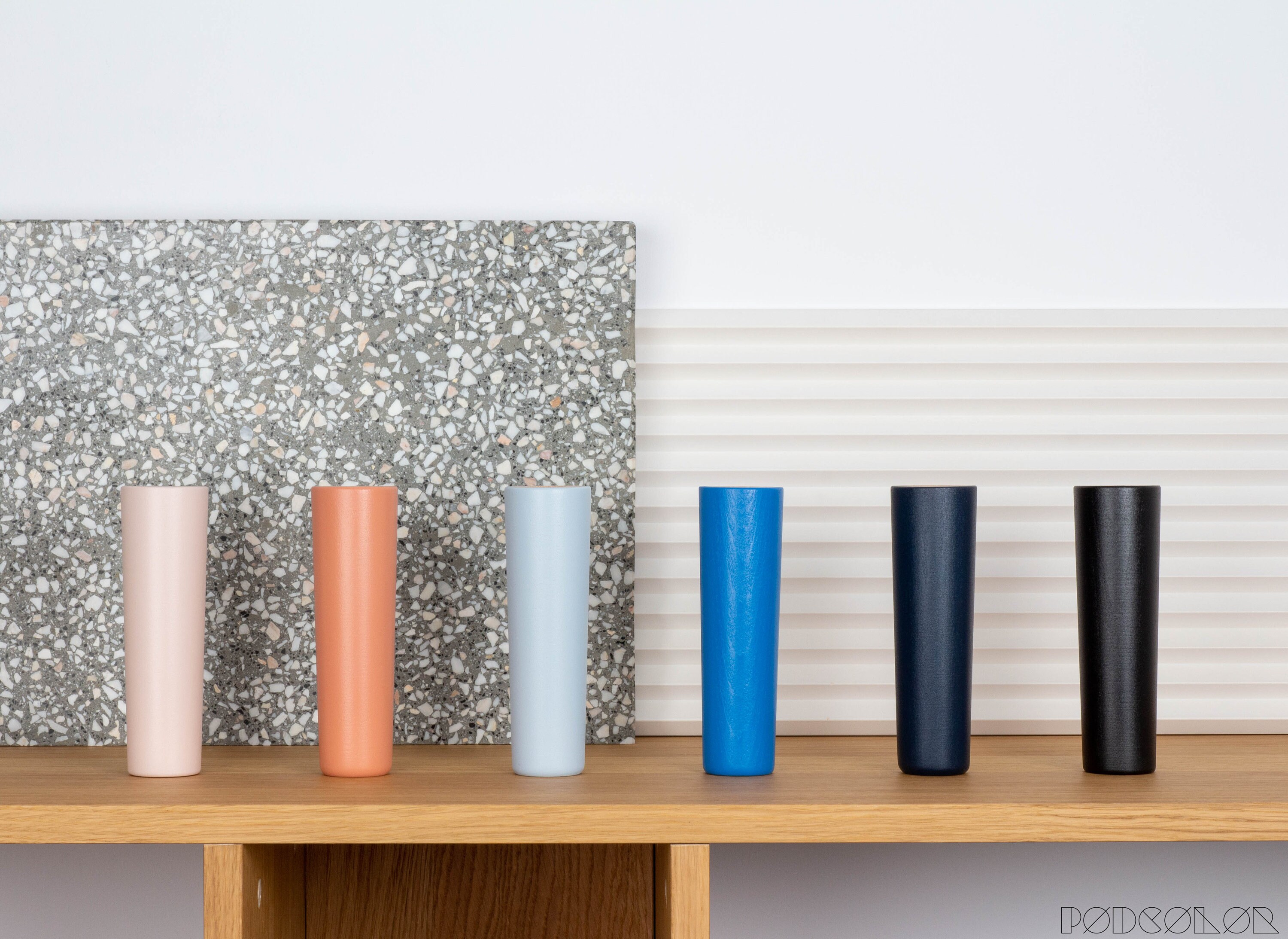


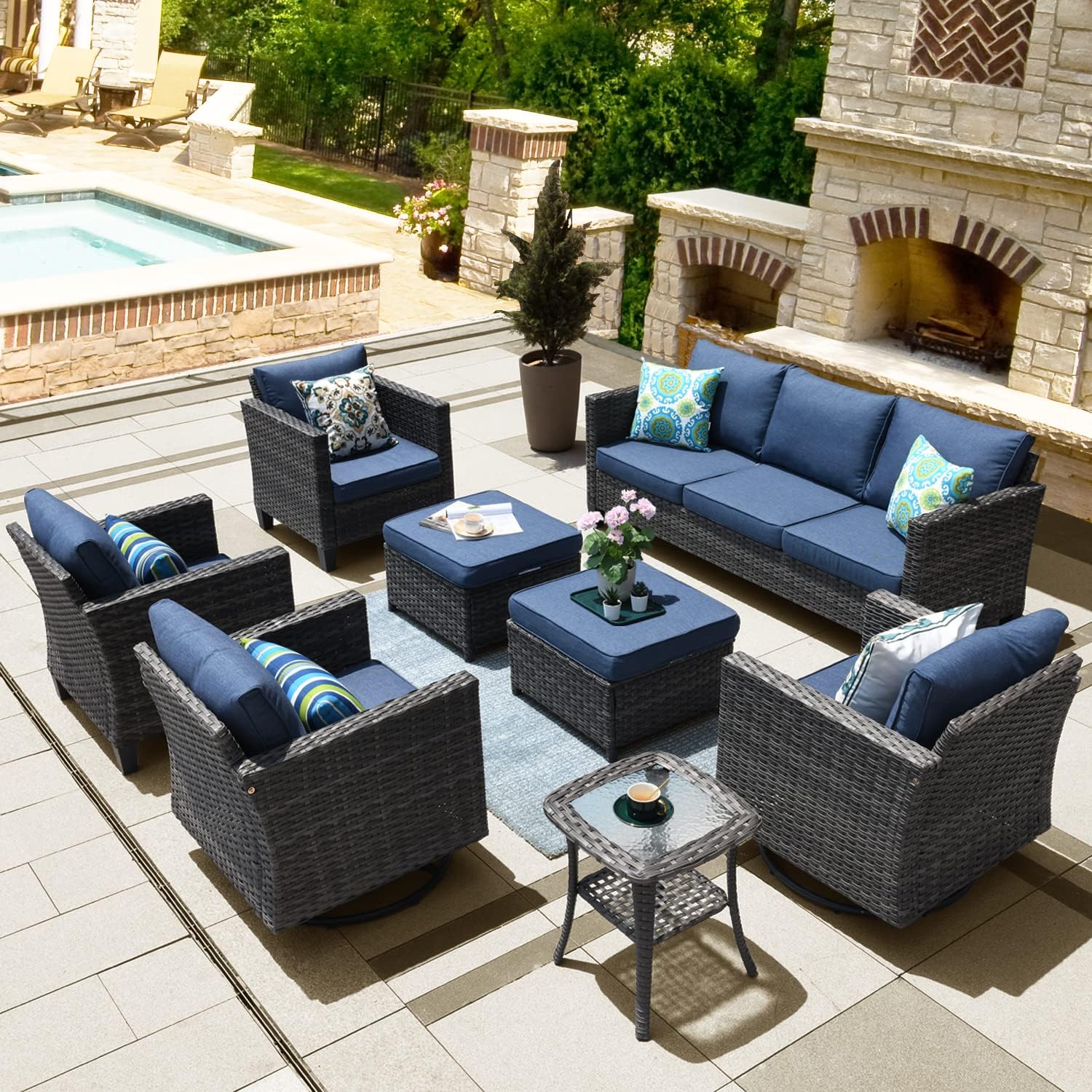



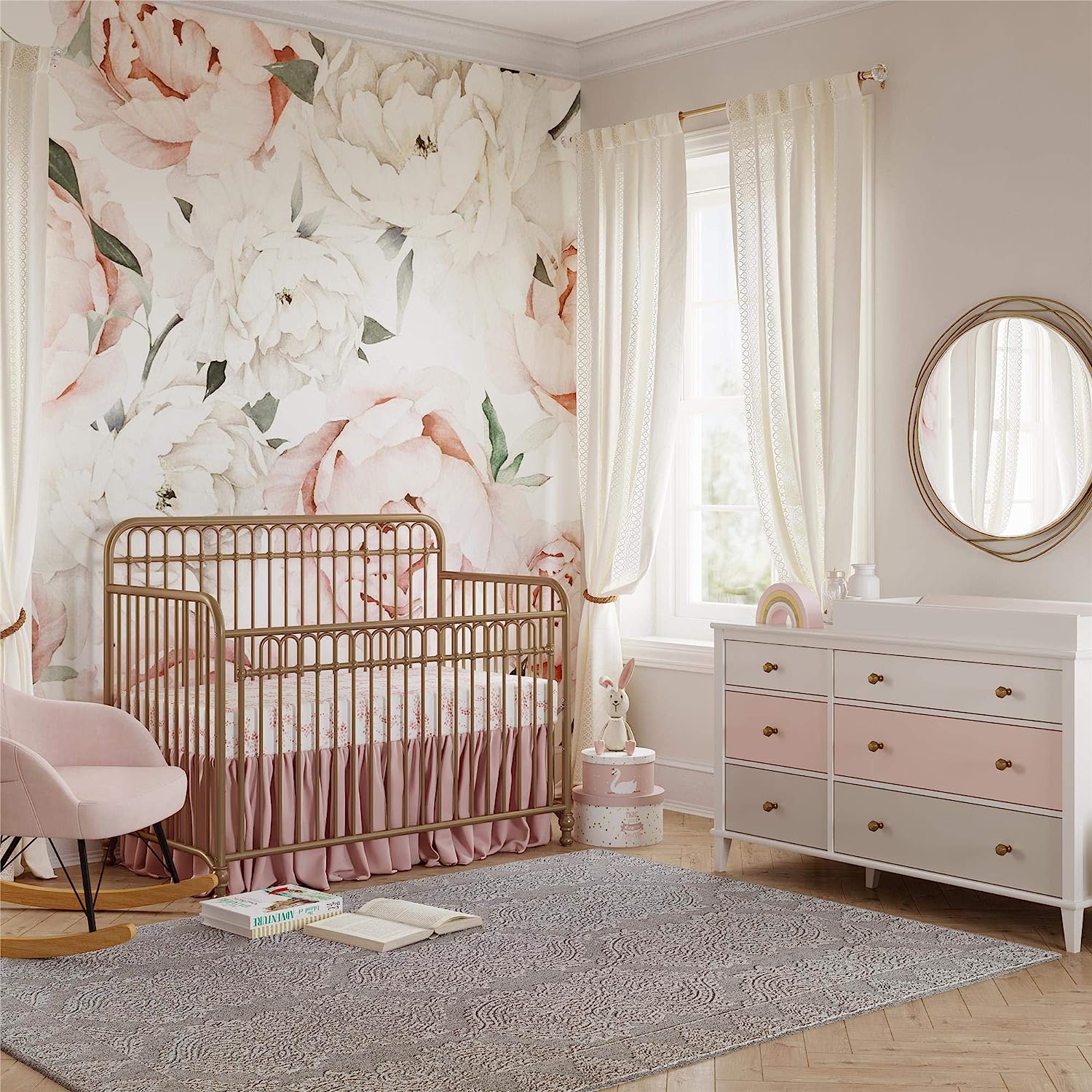
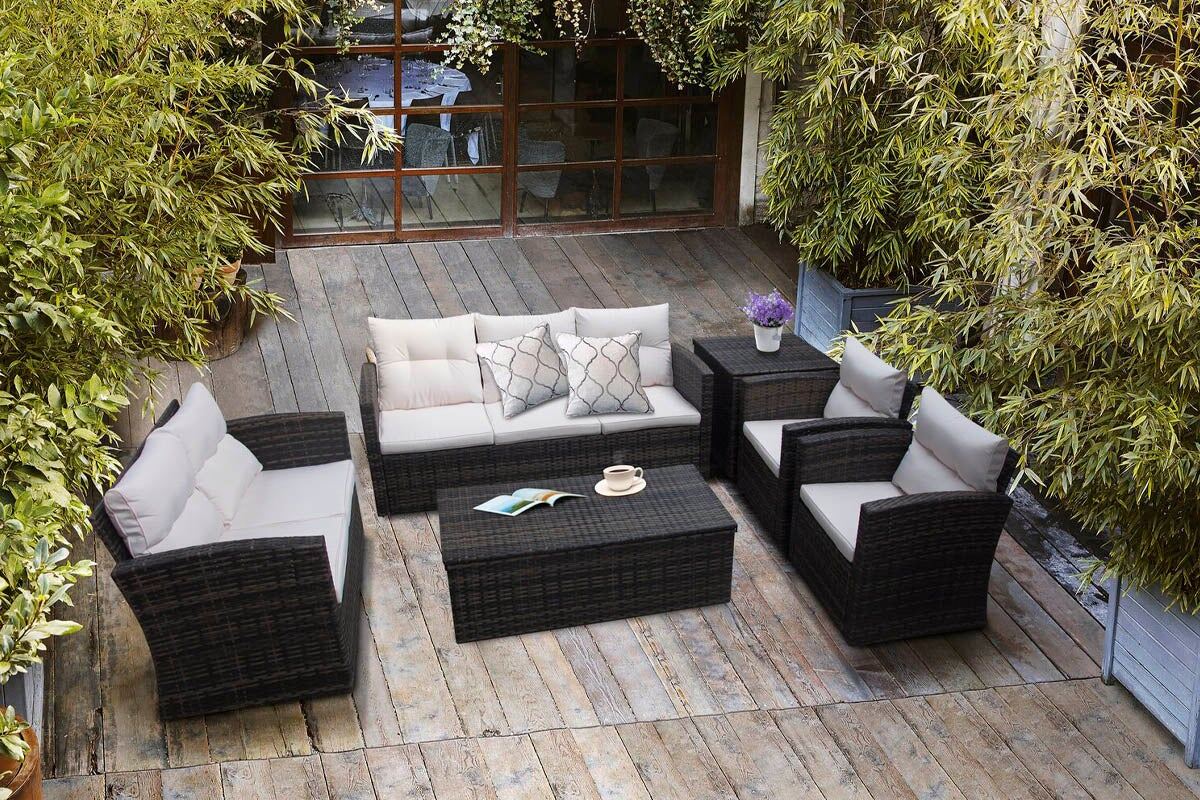
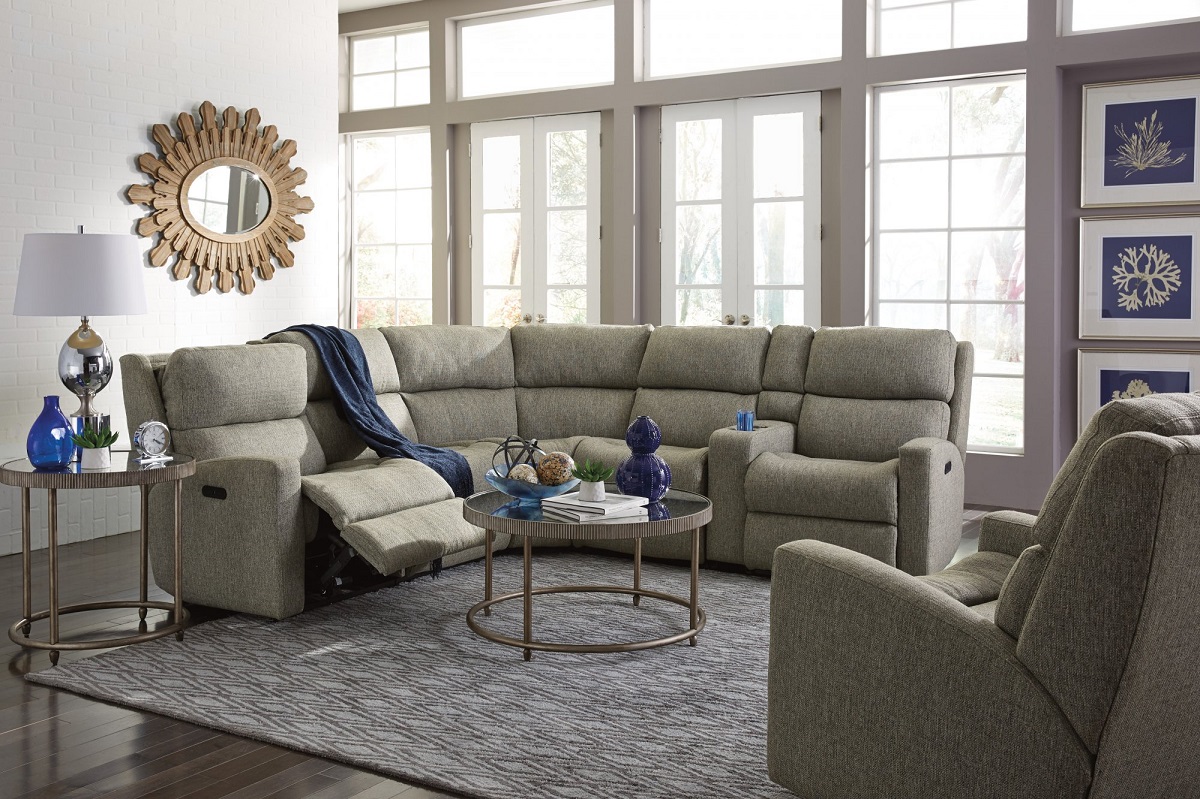
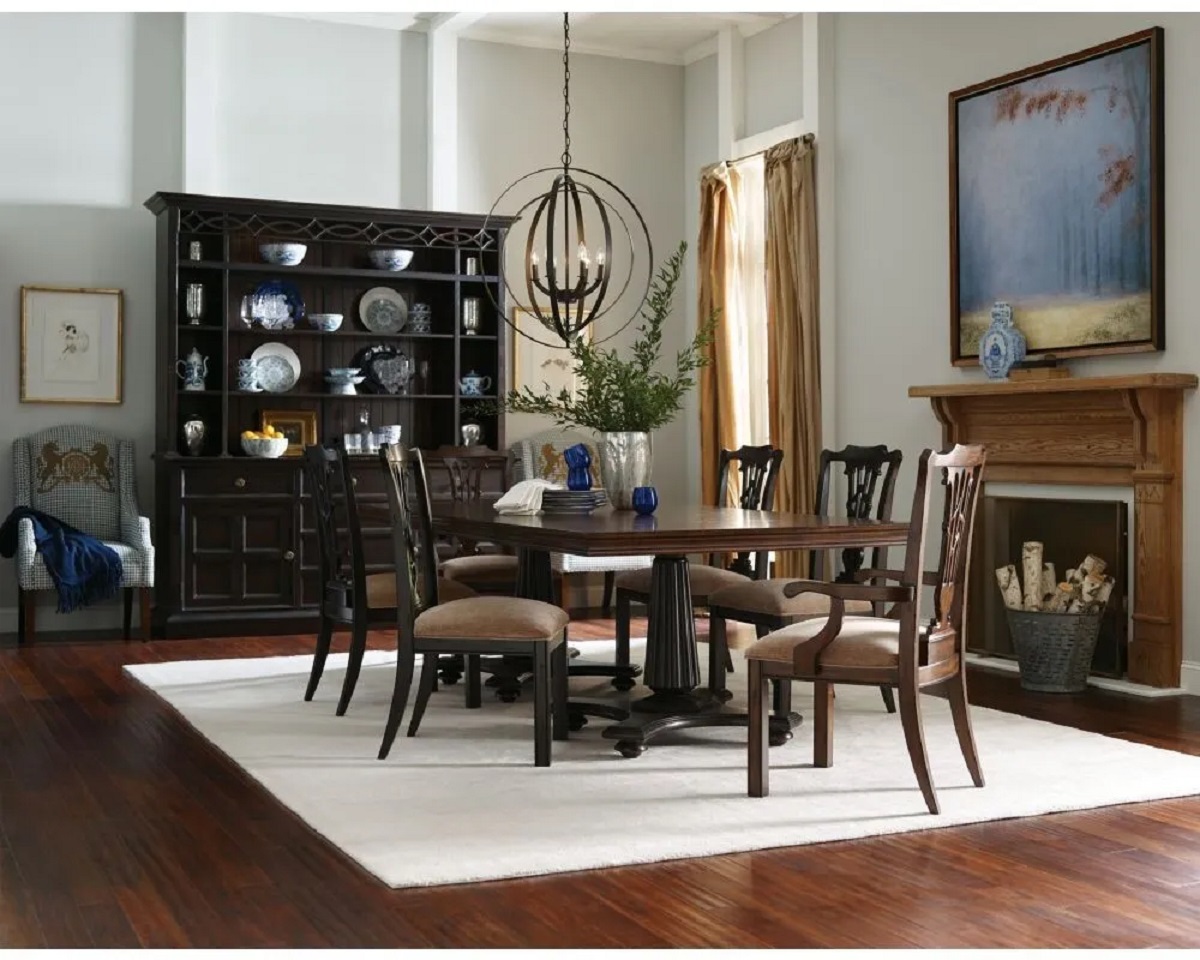

0 thoughts on “Who Buys Antique Furniture”